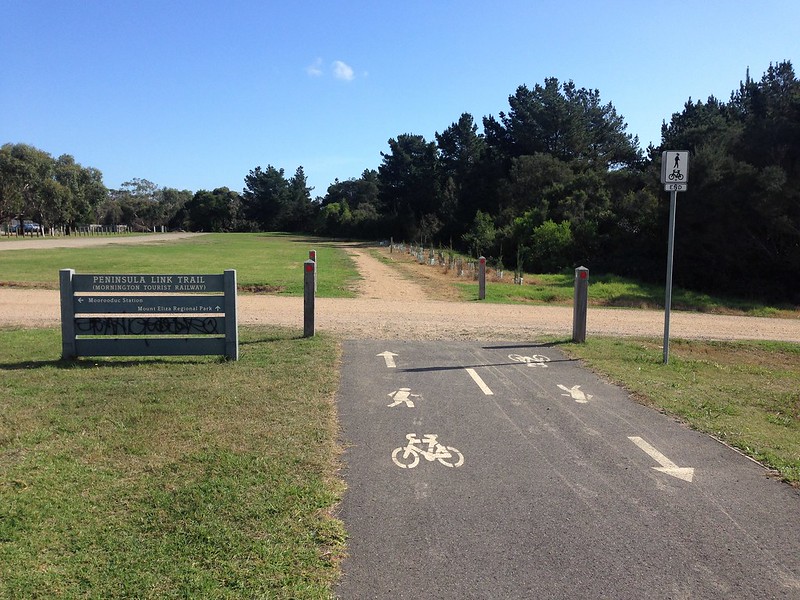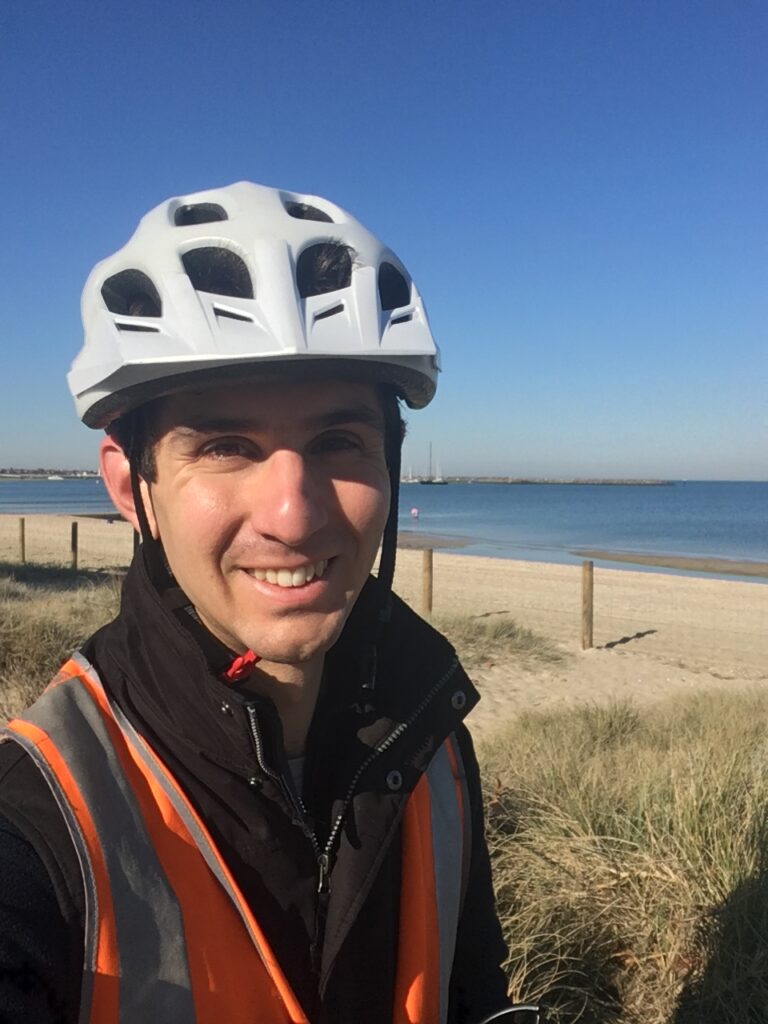My advice for people who are new to riding bikes during COVID-19
There has been a huge explosion in the number of people riding bikes during the COVID-19 pandemic – especially during lockdown. Some of the numbers that we’re seeing are pretty incredible.
Update on Melbourne cycling counts (data up to Sunday 9 August). Weekend/recreational volumes mostly up on last year, weekday volumes hit new low for the pandemic. #COVID19Vic pic.twitter.com/IZJhwPNnmO
— Charting Transport (@ChartingTrnsprt) August 11, 2020
Many people riding are new or relatively new to cycling. This has generated a whole lot of ‘advice’ resources for people.
Unfortunately, despite good intentions, many of these are misleading or plain wrong. In some cases, they are downright dangerous by giving advice that could lead to unsafe situations.
As a transport planner who also happens to ride a bike, I feel that now it’s now my turn.

Please note that this advice applies only to Victoria as road rules and regulations are different in each state/territory. It is also not legal advice. For specific information and to clarify anything, check this VicRoads webpage.
You do not have to ride in the bike lane or path
The Victorian Road Rules state that people riding must use a bicycle lane if provided unless it is impractical to do so.
This is a very important point to make that several ‘advice’ articles have missed. There are many instances where you will have to ride outside of a designated bicycle lane or path for your safety and for the safety of others. I can’t possibly list them all, but things like potholes, glass or cars blocking the way are all perfectly legitimate reasons.

For bicycle paths, VicRoads specifically states that you do not have to use an off-road bicycle or shared path. It is perfectly legal and legitimate to choose to ride on the road in these cases for any reason (unless otherwise signed).
You can ride side-by-side with another person
There are some important caveats to this rule, which you can check here, but by and large it is not illegal to ride ‘two abreast’ on-road.
This is a pretty simple, yet misunderstood, road rule.
You can do a hook turn at almost any intersection you want
Recent changes to the Victorian Road Rules mean that unless there is a sign explicitly prohibiting them, people riding can make a hook turn at any intersection.
This is a great little thing to know about because it can make right turns at major intersections a lot safer and less stressful.
Do not ride in the ‘dooring zone’
This is mainly for people new to riding who may not be as familiar as regular riders.
Car ‘dooring’ is when a person opens their car door in the path of another person riding a bike. It is an offence under the Victorian Road Rules but is unfortunately far too common. The VicRoads website states that over 770 instances of car dooring were recorded between 2011 and 2016. However, this is a huge underestimate as the vast majority of incidents go unreported.

My advice to new riders is to avoid the risk by riding outside the space where a car door could strike you. It can take some getting used to as you may have feel pressure from people driving behind you when you ride out into a traffic lane, but this is often the safest thing to do.
In some cases there may not be enough room for you to safely do this. My advice in this instance would be to slow down to a speed where you can safely come to a stop in a short distance. It’s also good to look for telltale signs that a door may be about to open, like a face in a rearview mirror or brake lights.
If you can and it’s not too impractical, I would recommend finding an alternative route to avoid high-risk areas. The ones that are notorious among regular riders (many of whom will avoid them) are generally the shopping strips of:
- Chapel Street
- Sydney Road
- Brunswick Street
- Smith Street
Streets in and near the CBD like St Kilda Road, Collins Street and Elizabeth Street are also hotspots.
If you are doored, Maurice Blackburn have a good page here on what to do and your rights.
You do not need any special equipment or clothing
One of the brilliant things about riding is that it’s so simple and easy to get started.
You don’t need any special clothes. You don’t need to be resplendent in lycra or high-viz fluro. You don’t need any attachments, GPS trackers or racing glasses.
All you need is a helmet, a front and rear light, and a bike with a bell. That’s it.

Unless you are planning on using a bike for racing or long recreational rides, there’s really nothing else you need.
Of course there are plenty of things that you could have and possibly even should have (e.g. an Allen key, gloves) but all that can come later if you need it. Once you start riding, you will get a much better idea of what you might want for the types of trips that you are making and your particular style of riding. This is preferable than trying to guess when you’re just getting started.
Personally, I choose ride with a hi-viz vest and gloves because that is my preference, but I would never presume to force someone else to do so. They are what I prefer when riding and every rider has their own way of doing things. Which brings us to the next tip…
Ride to your ability and comfort level
This one is really important. Basically, do not feel like you have to ever conform to any kind of stereotype or ‘norm’ around bike riding. Do not ride on busy roads if you don’t feel safe. Do not feel pressured to ride more quickly by someone else coming up behind you. Do not ride in a unsafe position on the road just because someone in a car is intimidating you.
There is absolutely no shame in riding more slowly than others, taking a quiet back street or walking your bike up a steep hill. Riding a bike should be an enjoyable experience that anyone can do at their own pace and in their own way.
Plan your ride (if you want to)
This tip is here mainly for new riders who may not be familiar with local bike routes.
Planning your trip on a bike is very different to planning one for if you are driving a car. You have to consider new things like the safety of a road, crossing points and the presence of tram tracks.
Of course there is always the joy of just ‘going for a ride’ and meandering around without any sort of fixed route or destination, so not everything has to be organised in advance.
But if you are new and would like some tips on where to ride, I am still offering free bicycle route planning (you can find details here).
This is not just about people riding bikes
This final tip is that being safe on our streets is not just about cyclist behaviour or rules.
I can’t emphasise this point enough.
People driving must also take a lot of responsibility for making our streets safe. As many people who ride also drive cars, there are many things that you can do when driving to make things just that little bit safer:
- Always look before opening your car door. Make sure that this involves you physically turning around and not just your rear view mirrors – they have blind spots!
- Leave a safe distance between your vehicle and the person riding a bike when overtaking. Generally this is no less than a metre, which is what other jurisdictions have adopted as law.
- Do not stop in bicycle ‘head start’ boxes at intersections. This is illegal and can put riders at risk by not allowing them space to get in front of cars waiting at intersections to avoid being ‘squeezed’ by moving traffic.

Get out there and ride!
The liberating feeling of riding a bicycle is incomparable. You can go wherever you want at your own pace and under your own power. You don’t have to fill up with petrol, you save money and you have a lot more route options than if you were driving a car.
In my experience you will also develop your abilities to be calm and let things go. In almost all near-misses or incidents that I have experienced while riding, they were the result of carelessness or ignorance from the person driving rather than any deliberate aggression or violence. Once you realise that all of these hazards that people cause are nothing about someone hating you specifically as a person, it makes dealing with them a lot easier. This is something that will only come with time, experience and a lot of patience.
Despite everything that I’ve said, I really hope that this hasn’t scared anyone off riding. I ride thousands of kilometres every year in every setting from beautiful rail trails in the countryside to high-volume urban roads (when I absolutely have to) and the vast majority of my trips are incident-free. It is, in my opinion, an amazing way to get around and has undoubtedly changed my life.
If you haven’t experienced the freedom of riding before, now is the time to try.
Let me know below if you have any questions and I’ll do my best to help you out. Happy riding!

1 Comment
Join the discussion and tell us your opinion.
[…] Stage 4 lockdown, Chris talks to Philip Mallis about his article written for people new to cycling (My advice for people who are new to riding bikes during COVID-19) Philip was interviewed earlier this year about journey planning for new & intending riders […]